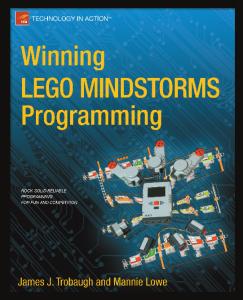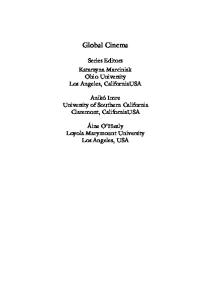Toy Stories: Attachment Play in The LEGO Movie and The LEGO Movie 2
This chapter draws upon a language of attachment derived from psychological discourses and the tradition of toys-to-life narratives to explore attachment play—toy-mediated storytelling that expresses a need for emotional attachment—in The LEGO Movie and T
- PDF / 7,569,594 Bytes
- 318 Pages / 433.701 x 612.283 pts Page_size
- 91 Downloads / 303 Views
Deconstructing LEGO “In this insightful and engaging analysis of LEGO and its culture, Jonathan Rey Lee (de)constructs the ‘brick’ as a site teeming with cultural resonance. Examining the LEGO phenomenon through such interlocking perspectives as pedagogy, dramatism, digital culture, transmedia studies, and concepts of play, Lee’s work embraces the building block mentality for scholars, fans, and AFOLs alike. Accessible and erudite, Lee proves he isn’t just playing around.” —Paul Booth, Professor, DePaul University, United States
Jonathan Rey Lee
Deconstructing LEGO The Medium and Messages of LEGO Play
Jonathan Rey Lee Cascadia College Bothell, WA, USA University of Washington Seattle, WA, USA
ISBN 978-3-030-53664-0 ISBN 978-3-030-53665-7 (eBook) https://doi.org/10.1007/978-3-030-53665-7 © The Editor(s) (if applicable) and The Author(s), under exclusive license to Springer Nature Switzerland AG 2020 This work is subject to copyright. All rights are solely and exclusively licensed by the Publisher, whether the whole or part of the material is concerned, specifically the rights of translation, reprinting, reuse of illustrations, recitation, broadcasting, reproduction on microfilms or in any other physical way, and transmission or information storage and retrieval, electronic adaptation, computer software, or by similar or dissimilar methodology now known or hereafter developed. The use of general descriptive names, registered names, trademarks, service marks, etc. in this publication does not imply, even in the absence of a specific statement, that such names are exempt from the relevant protective laws and regulations and therefore free for general use. The publisher, the authors and the editors are safe to assume that the advice and information in this book are believed to be true and accurate at the date of publication. Neither the publisher nor the authors or the editors give a warranty, expressed or implied, with respect to the material contained herein or for any errors or omissions that may have been made. The publisher remains neutral with regard to jurisdictional claims in published maps and institutional affiliations. Cover illustrations: SireAnko, Getty Images. This Palgrave Macmillan imprint is published by the registered company Springer Nature Switzerland AG The registered company address is: Gewerbestrasse 11, 6330 Cham, Switzerland
Preface---Deconstructing “LEGO”
“LEGO is not a toy,” argues Finn’s father in The LEGO Movie, “it is a sophisticated interlocking brick system” (2014). Toys, apparently, cannot be “sophisticated” without forcibly suppressing their playful elements (as the father attempts to do by regulating his son’s participation and gluing the bricks together). Indeed, this counterintuitive denial that one of the world’s best-known toys is truly a toy finds surprising resonances in scholarly discourse. “Strictly speaking, LEGO isn’t a toy” argue the editors of LEGO and Philosophy in precisely this vein: “These little plastic bricks are more like a building material or medium, and
Data Loading...











